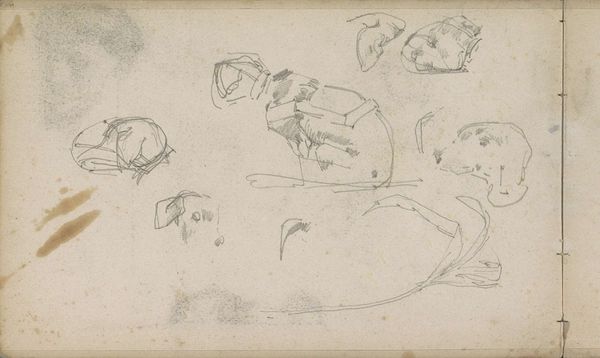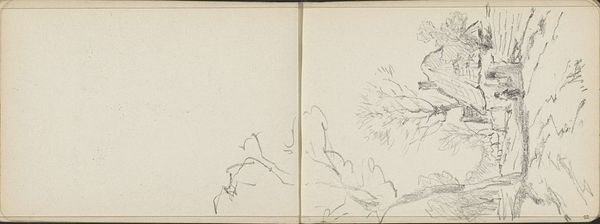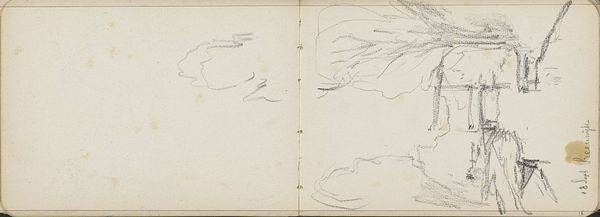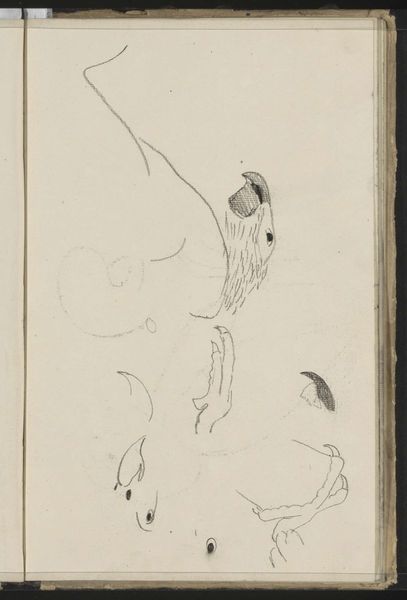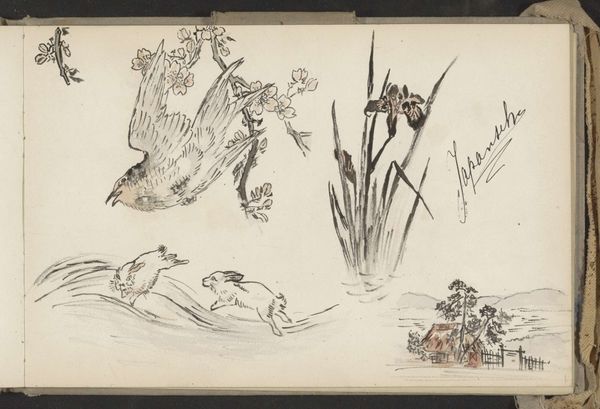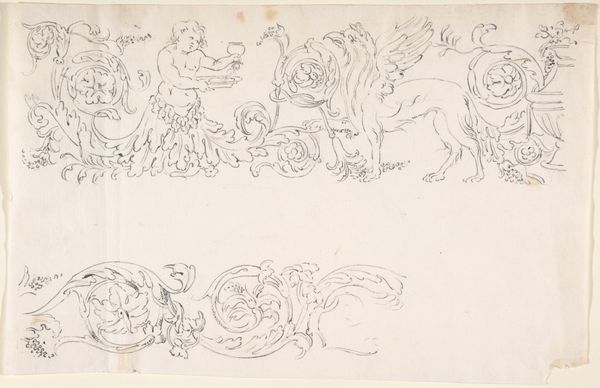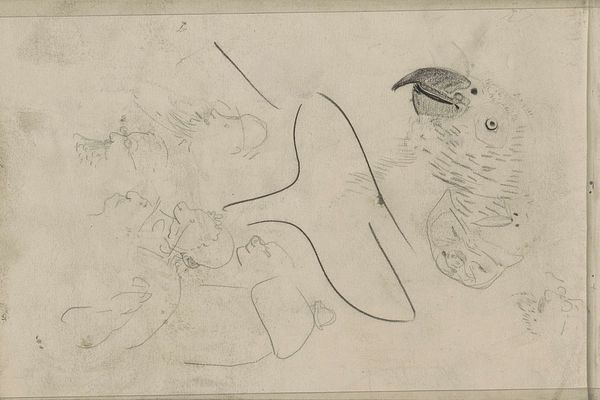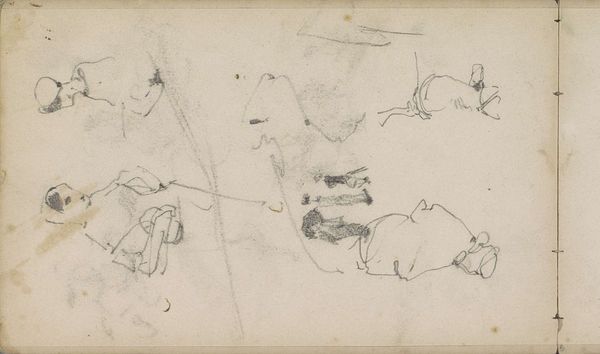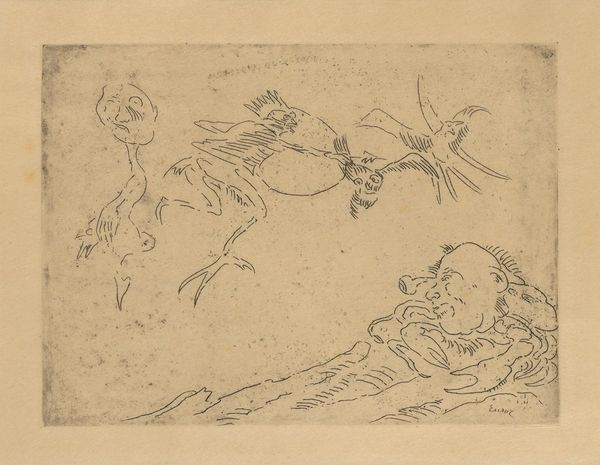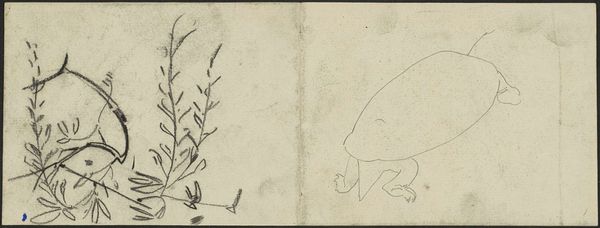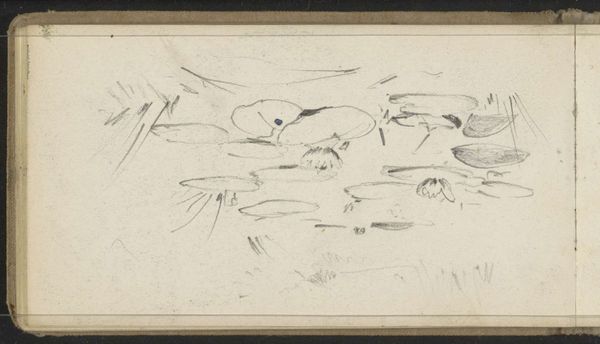
drawing, pencil
#
drawing
#
animal
#
figuration
#
pencil
#
realism
Dimensions: height 272 mm, width 92 mm
Copyright: Rijks Museum: Open Domain
Editor: This is a pencil drawing titled "Kippen, hanen en kuikens" or "Chickens, Roosters and Chicks," attributed to Adrianus Eversen, dating sometime between 1828 and 1897. It seems like a study, a quick capturing of poultry. What catches your eye about this drawing? Curator: Well, as a materialist, I'm immediately drawn to the paper itself – the visible fibers, the slight discoloration hinting at its age and journey. This isn't just a backdrop; it’s a material witness to the artistic process. Consider the pencil strokes too: notice the artist's hand, the pressure applied, the varying densities used to define form and texture of the fowl. What was the availability of pencils like at this time? What grades did Eversen have access to? Editor: I hadn't considered the actual pencil itself. That's interesting! So, instead of just seeing a picture of chickens, you're seeing the economic and industrial conditions of art making? Curator: Precisely! Who produced these pencils? What labor went into their making? Were they locally sourced or imported? All of these factors influenced the artwork, making it part of a much wider production network. What could this drawing reveal about 19th-century agrarian society and the role of animal husbandry in the economy? Editor: That's a really different way of thinking about art. It definitely gives you a wider perspective of the historical implications that wouldn’t come to mind right away. I will look at drawings with more appreciation for the artist’s conditions. Curator: Absolutely. Art exists within a web of material relationships. Examining the social and economic conditions helps reveal how art reflects and shapes the world around it.
Comments
No comments
Be the first to comment and join the conversation on the ultimate creative platform.
